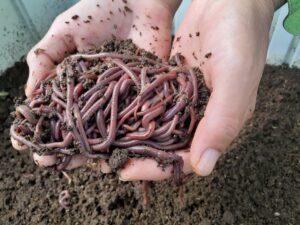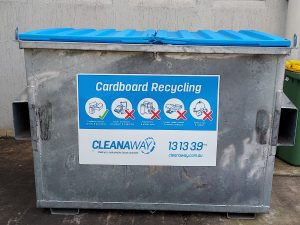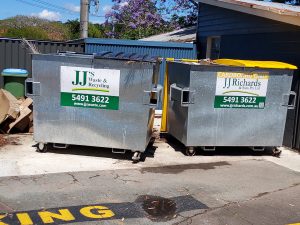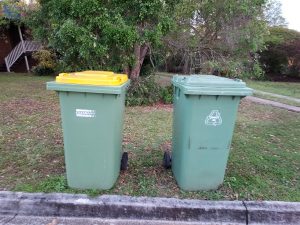Waste from households generates around 20 percent of the nation’s emissions of greenhouse gases. Yet waste is a far greater issue than just atmospheric pollution. Every item that is dumped that could be recycled but isn’t, is causing humanity to utilize more of the worlds natural resources and extra energy to extract refine and manufacture the product again. Waste and Recycling are integrally linked and form a part of the shift to more sustainable communities and emissions reduction.
What happens locally with waste?
Gympie Regional Council (GRC) manages the waste by collecting waste from urban households and business bins weekly. Cleanaway has this contract. Everyone has two bins:
- A yellow topped bin, emptied every two weeks, into which all recyclable items should be placed, and
- A green topped bin, emptied weekly, into which all non recyclable material, i.e. waste is placed. This material goes to landfill.
There are also waste transfer stations in the rural areas, where locals can deposit waste and GRC periodically shifts this to landfill. As well, ratepayers are able to take trailer loads of garden and household waste to the dump. Recyclable materials are usually fee free, but additional materials going to landfill will incur a fee based on the size of the load.
The Recyclable bin contents are ferried to Materials Recovery Facility (MRF) in Harvey Bay where they are sorted into various products and sold to be reprocessed and used to manufacture goods. Only the following items should be placed into the recycle bins:
- clear, green and brown glass jars and bottles, all with the lids removed,
- steel cans, steel aerosol cans,
- newspaper, magazines, junk mail, cardboard, telephone books, office paper,
- aluminium cans, aluminium aerosol cans,
- plastic containers and bottles with the recycle symbol and numbers 1 to 6, all with their lids removed.
Anything smaller than a palm or a clenched fist is too small to be handled at the MRF. If pieces cannot be accumulated into an integral unit larger the the minimal size, it must go into the waste stream.
The waste stream is taken to landfill, where it is buried. We know from the initial analysis of GRC’c emissions from 2019 to 2020 that the Landfill is GRC’s largest source of greenhouse gases at 67 %. This is significantly reduced due to the capture and flaring of methane. The volume of methane is too small to use for energy generation. The methane is produced by the bacterial decomposition of organic materials in the absence of oxygen. Methane is about 28 times more severe as a green house gas than CO2, produced after methane is burnt. Methane production would also be reduced if households did not dump so much food, garden waste, paper and any other organic materials.
Many other items are recycled outside of the GRC’s kerbside collection by either GRC or other commercial operators including:
- Household furniture
- Clothes and fabrics
- Paper/Cardboard/Documents
- Metal and Electrical goods
- Information technology goods
- Soft Plastics
- Polystyrofoam
There are links to these on the GRC website.
Key strategies to Reduce waste and Emission
Recycle bins are for the designated goods only. Contamination with unwanted materials leads to this material going to landfill. Planet Ark has many great ideas to help everyone minimize their impacts on the planet.
https://www.facebook.com/planetark/videos/938879910090544/
Food and Garden waste can often be handled at home to prevent it going to the landfill.
Food waste can be used to feed worms in a worm farm to produce excellent potting media and liquid that is an excellent plant fertiliser for the garden or potplants.
Research indicates about $1,000 worth of good food is wasted per person annually. Plan the food shopping to avoid excessive purchasing. Store and eat later any surplus foods.
Garden waste can be scattered about the gardens and allowed to act as mulch or it can be composted in a bin from use as potting media or soil enhancer.
Decomposing in the air produces CO2 not methane and this is a better result than achieved at the dump.

Soft Plastics can be returned to most grocery stores.
Clothes and fabrics are taken by OP shops. If they cannot be resold, they will be sold as rags or maybe, disassembled and rewoven to cloth again. Some will also consider old furniture, book, and electrical goods if in working order.
Other businesses will take metal, electrical goods and e-waste. Just make sure you have destroyed the information stored on any devices. Electrical goods contain valuable materials that should be recycled.
All recycling saves the energy and cost inputs to mine, extract and process new resources. This is one the the biggest benefits of recycling. Its effectiveness depends on the individual who initially sort these many products before they enter the waste stream. You will make a difference if this is done correctly.


